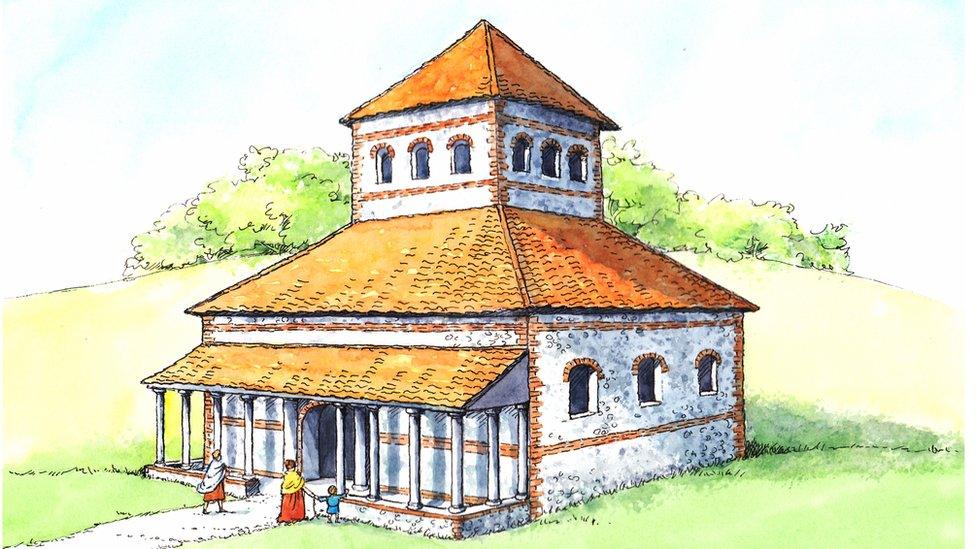Annual archaeological dig of Roman town under way
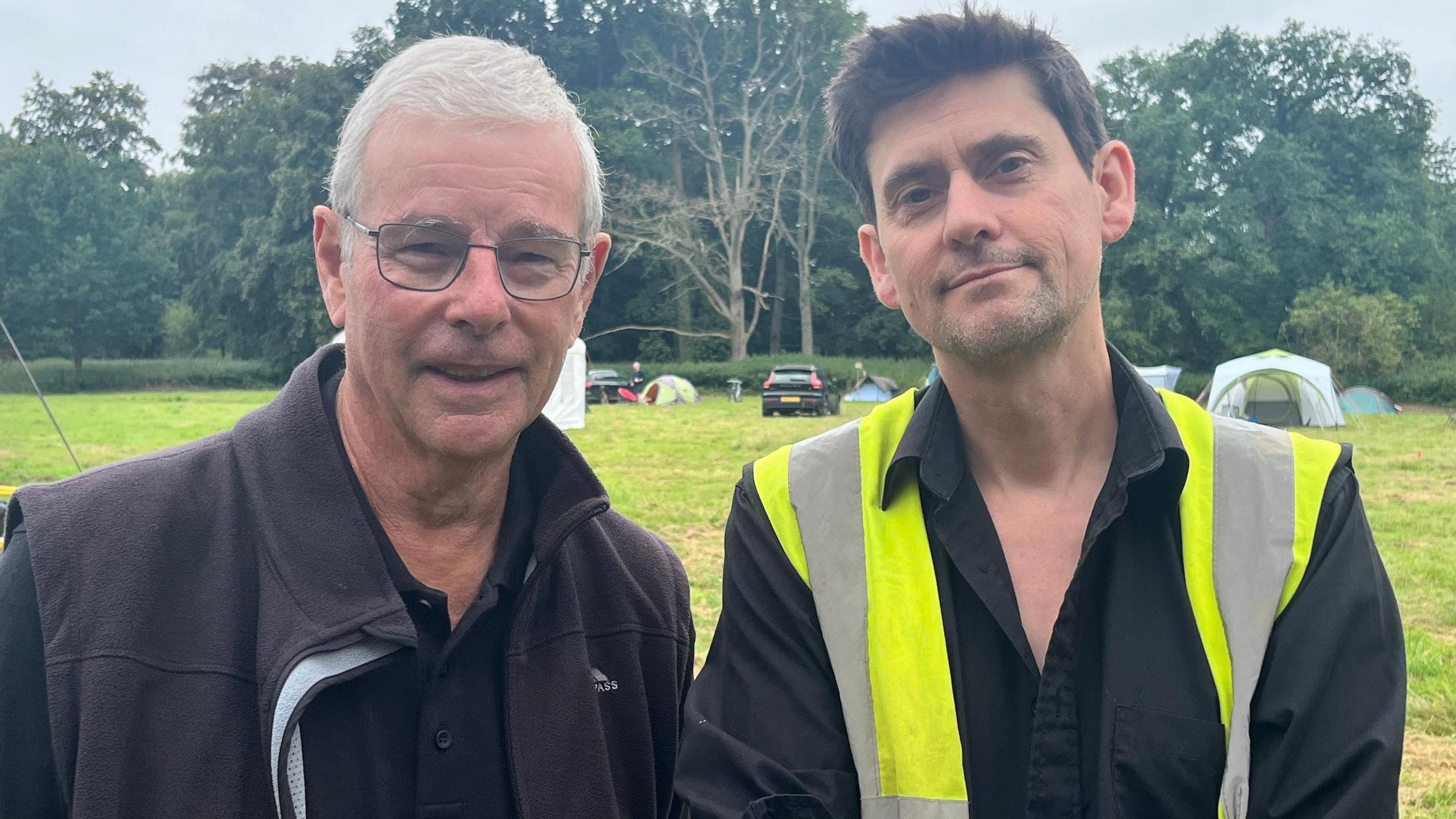
Mike Pinner and Giles Emery, of the Caistor Roman Project, want to encourage more local people to get involved with the archaeological digs
- Published
An annual archaeological dig has begun at a site believed to have been the largest Roman town in East Anglia.
Volunteers at the Caistor Roman Project (CRP) will scour 2nd Century defensive ditches close to the grounds of Caistor Hall Hotel, in Caistor St Edmund, near Norwich.
Two open days will also be held as part of the dig, allowing residents to see the discoveries made and learn more about the settlement's rich history.
"We think it's very important to involve the local public as so many of them don't understand this is the start of Norwich - it's here and they should come and take a look," said Mike Pinner, from CRP.
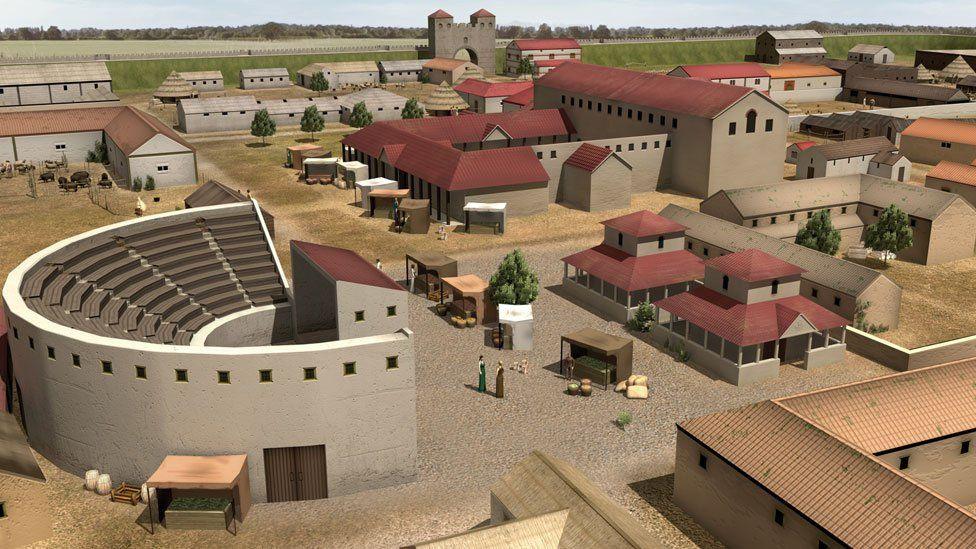
Venta Icenorum had running water, baths, a town hall and a forum, and was enclosed inside walls in the 3rd Century
The Roman town of Venta Icenorum was the smallest Roman regional capital in Britain.
It was the third year the site had been excavated during the summer by a team of locals and archaeologists since the CRP was formed 16 years ago, when the University of Nottingham began its digs.
"We're very excited - we've been at this for a long time and this year we're on the triple ditches," said Mr Pinner.
"It's all community-driven by people from the locality, who come here to take part in the digging."
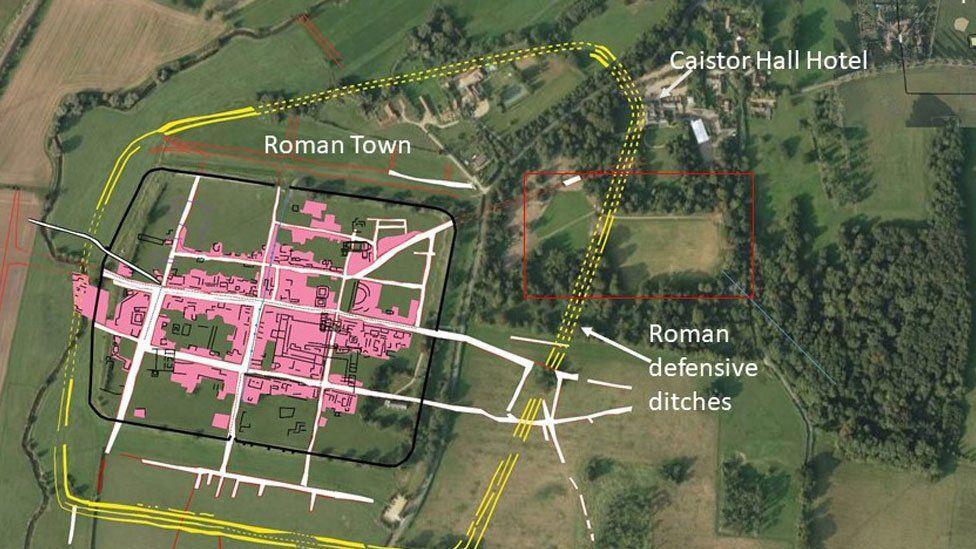
The grounds of Caistor Hall Hotel form part of the ancient settlement
Over the years, a large amount of Iron Age pottery has been found, as well as religious items and human and animal burials.
Archaeologist Giles Emery, who is part of the project, said: "When people come to visit the town here, they just see these town walls which are very impressive, but that's probably only two-thirds of the size of the town.
"In the 2nd Century there was an enclosure that went round the whole area - [it was] quite massive - that was forgotten about and lost, so we're excavating those.
"It's only been done twice before, and both times it's turned up some really interesting archaeology, so we're hoping we'll get lucky."

Excavation works at Caistor St Edmund started in 2009, led by Prof Will Bowden from Nottingham University
According to the project, Venta Icenorum was "one of only three Roman regional capitals in Britain that were not succeeded by medieval and modern towns", with the others being Wroxeter and Silchester.
Mr Pinner said the group was always looking for new members to join, with people able to get actively involved in the digs.
Open days will be held at the site on Saturdays 23 and 30 August 2025, between 10:00 and 15:00 BST.
Get in touch
Do you have a story suggestion for Norfolk?
Follow Norfolk news on BBC Sounds, Facebook, external, Instagram, external and X, external.
Related topics
- Published20 August 2023
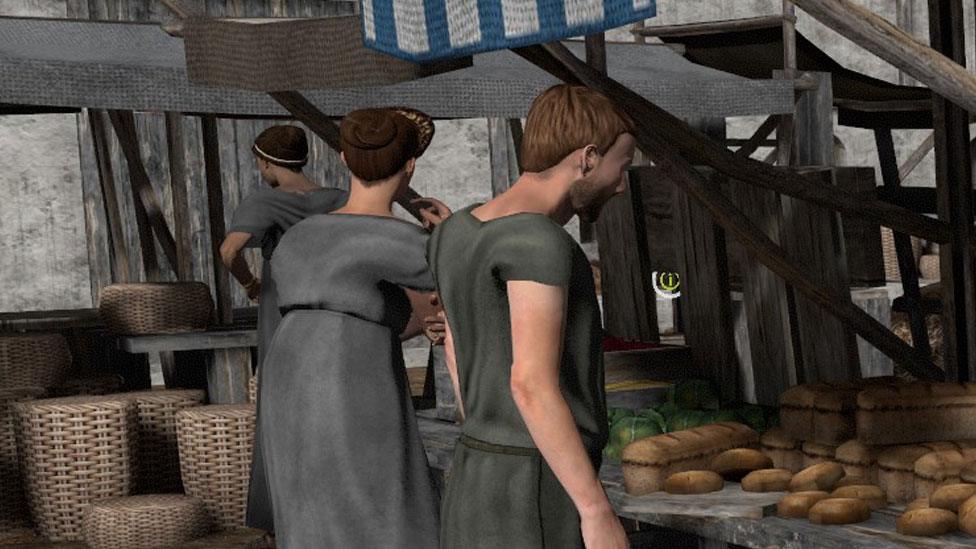
- Published17 August 2022
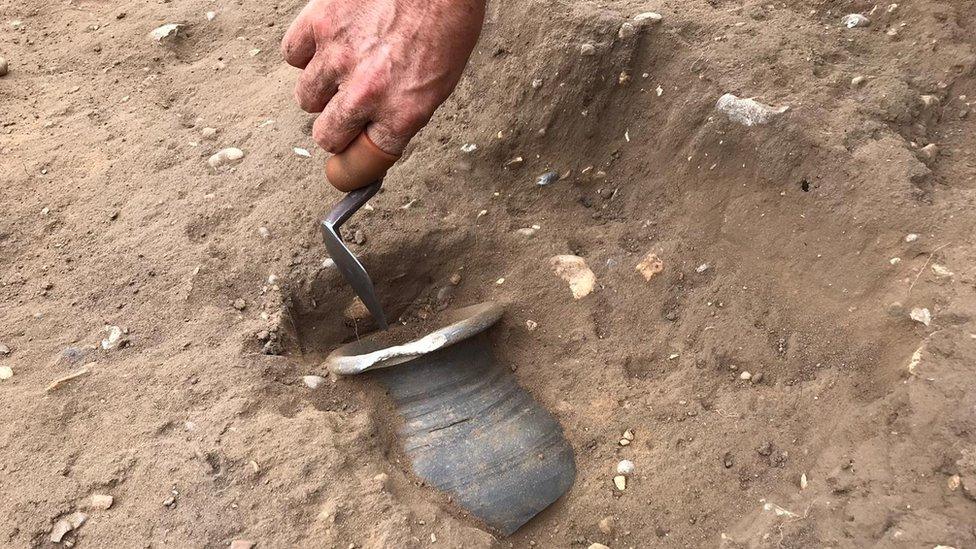
- Published13 September 2020
